November Top Tips For Your Limousin Garden
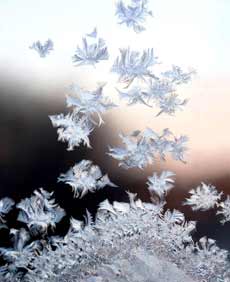

Jack Frost has finally arrived in Limousin……….
October has been and gone and with it has come the weather that we can normally expect for the region at this time of year. The early frost’s have arrived and seen off most of the unprotected annuals and nature seems to have returned to normal or, has it?
There is still a lot of talk around an Indian summer, up to now there has not been a really hard ’killing frost’.
Though, as eggs are eggs, sooner or later it will arrive so be prepared if you are looking to preserve what you have for as long as you can.
The problem with protracted or unsettled weather conditions is two fold. Firstly, nature can get confused with what it should be doing. Which can then lead to us being confused as to what to do? The best way to try and adapt to these conditions is to prepare for what will eventually arrive. As always watch the weather forecast as often as you can on a daily basis, to ensure you have a head start on what will be around the corner.
Normally, November is a month where the gardener can relax a little and attend to the task’s at hand and the ones that may have slipped for a whole host of reasons.
Lawns:
 As mentioned last month ‘All leaves must be kept off the grass’.
As mentioned last month ‘All leaves must be kept off the grass’.
The growth rate of your grass should have slowed by now, though, sunny spells and the autumn fertilizer treatment it should have had, do encourage it to grow. If not already done a November application of fertilizer is very beneficial to a lawn constructed of cool-season grasses. The reason being is that it promotes root development, normally without excessive top growth. With a strong root system, your lawn will be better able to withstand drought conditions next summer. It is not unusual to perform a winter cut around late Jan or early Feb, again depending on the weather, avoiding frost at all times.
Planning:
 Now is the time you may want to order your seed catalogues for what you may want to plant in January. For the vegetable grower this is basically an all year task due to the nature of crops, of which they will be well aware of.
Now is the time you may want to order your seed catalogues for what you may want to plant in January. For the vegetable grower this is basically an all year task due to the nature of crops, of which they will be well aware of.
For the seasoned gardener and for variety, an idea to consider maybe sourcing plants from companies that specialize in old and rarer varieties and of course wildflowers. It is also a good time to consider what natural plants from France (especially wild flowers ) you may want to use in your garden schemes next year. Also consider plants native to certain (cooler) regions of Japan, North America and Canada for Autumn/Winter show.
A tip you may want to consider this autumn and primarily for the winter is this. Spend some time looking at the autumn and winter temperatures here in the Limousin (though more specifically in areas of your garden), at different times of the day. The reason being is that there is a lot of conjecture between ’official’ and ‘unofficial’ temperatures here in the region. The main factor that you should be concentrating on is YOUR garden.
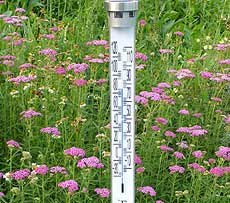 The greater your information is about your garden, will in turn allow you to make more informed choices about what will stand a better chance of survival when planted, which again in turn, will save you money in the long run and provide you with a great show. You will be surprised how cold it really is in that shaded area at midday when the TV is telling you its 5 degrees. 4 or 5 outside/garden thermometers can be purchased quite cheaply from the various ‘cheapy shops’ throughout the Limousin.
The greater your information is about your garden, will in turn allow you to make more informed choices about what will stand a better chance of survival when planted, which again in turn, will save you money in the long run and provide you with a great show. You will be surprised how cold it really is in that shaded area at midday when the TV is telling you its 5 degrees. 4 or 5 outside/garden thermometers can be purchased quite cheaply from the various ‘cheapy shops’ throughout the Limousin.
Planting:
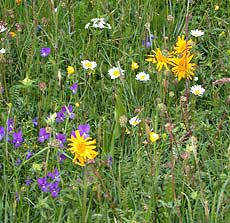 As already mentioned, start to think about spring wildflowers. Sow seeds now and try to choose a mix that is best suited to your climate and area. Alternatively you can buy individual varieties to mix your own blend. When planting scatter the seeds and lightly top dress with soil to keep the seeds moist and away from the birds.
As already mentioned, start to think about spring wildflowers. Sow seeds now and try to choose a mix that is best suited to your climate and area. Alternatively you can buy individual varieties to mix your own blend. When planting scatter the seeds and lightly top dress with soil to keep the seeds moist and away from the birds.
Spring flowering bulbs are still available, but, not for long. Bulb forcing can be continued through late winter and garden centres may well have the price reduced on any remaining bulbs.
Take Root cuttings of woody shrubs and evergreens, such as azaleas, holly, and hydrangea at this time of year. With evergreens, now is a good time to plant and transplant trees, shrubs and ground covers.
Without question, now is best time to choose deciduous trees. You still might be able to buy them for autumn colour (while they still have leaves) if you wish. Or, if you are unsure of what to buy, get to know what to buy for next year.
Maintenance:
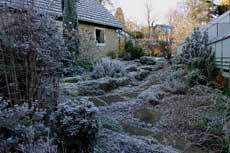 Feed new flower and vegetable plants with a liquid fertilizer preferably two weeks after planting them.
Feed new flower and vegetable plants with a liquid fertilizer preferably two weeks after planting them.
Keep a watch on your newly planted lawns, landscape plants and vegetables. Water them if they look dry to keep them moist.
Continue deep watering your evergreens until freezing weather occurs.
Place fallen leaves, weeds, spent annuals and vegetables into the compost pile, avoiding any blight or pest that may be present.
After several killing frosts have occurred this autumn.
Cut back dormant perennials to about 3 inches (7.5 cm)
above the ground. After the ground has frozen, plants can be mulched to guard against displacement due to soil heaving. These steps ensure a successful show of plant foliage and colour next season.
After your chrysanthemums have been killed by frost. Cut them down in preparation for winter. Apply a 2- to 3-inch (5
to 7.5 cm) layer of loose mulch (such as leaves), after the ground has frozen.
Dig up tuberous begonias, trim the dried leaves and stalks, brush off soil residue and store the tubers in a cool dry place until spring and the warmer weather arrives.
Dig, divide and re-plant any remaining overcrowded perennials that have finished flowering.
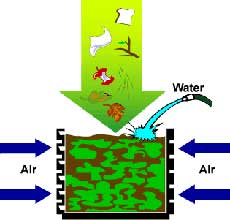 Keep the compost heap moist to aid in the decay process. Turn the pile to mix in all late autumn additions.
Keep the compost heap moist to aid in the decay process. Turn the pile to mix in all late autumn additions.
Add fertilizer residues from nearly empty bags onto the pile and mix.
Earthworms must remain below the frost line to survive.
Mulch piled on top of soil raises the frost line. If you want earthworms to help break down organic matter in the upper soil layers, mulch deeply. If you need the subsoil aerated, leave the surface mulch thin; the worms will burrow downward to stay warm.
Check the gutters of your house, garage, barns and sheds for fallen leaves or tree debris. The reason being is that heavy autumn rains will quickly overflow clogged gutters, possibly damaging foundation plants below them and the foundations of your property.
What may also occur after the rain is a heavy frost; this means that paths will become skating rinks.
Be aware that certain plants are very sensitive to salts and de-icing salts.
House plants will need to be checked on a constant basis.
Remember that excessive heat can be just as dangerous as excessive watering. One of the first signs to look out for is soil that has pulled away from the rim of the pot. This indicates that the houseplant is suffering from inadequate watering and subsequently resulting root problems.
It will be difficult to add sufficient water overhead to rewet the soil. Soak the pot in a sink full of water, then drain it thoroughly. Remember to use rain water from your water butt that is preferably at room temperature.
Continuing with houseplant watering. Most houseplants should not be watered until the soil feels dry. Then water thoroughly (again rain water at room temp), let the water soak in, then water again until water drains into the saucer. Make sure you empty the saucer within an hour.
The time will soon be upon us to de-commission our lawnmower‘s for the winter. If you are unsure how to do this, as always use a professional. Though there are certain tasks that you may want to do yourself.
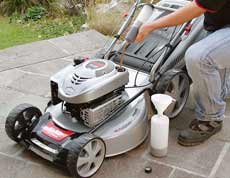 You may want to clean out grass from underneath your mower’s cutting deck (this should by rights be completed after every cut). But before you ‘tip’ your mower on its side to do this, ensure you know which way to tip it.
You may want to clean out grass from underneath your mower’s cutting deck (this should by rights be completed after every cut). But before you ‘tip’ your mower on its side to do this, ensure you know which way to tip it.
The reason being is to prevent engine oil entering the engine via the carburettor, thus possibly damaging the carburettor or engine.
If you do not know which way to tip your mower to prevent this happening, get a professional to show you, refer to your owner’s manual or telephone the technical support group of your mowers manufacturer and ask them, you have been warned.
When you know the correct way to tip your mower and you have removed this years grass build up. Inspect the underside of your cutting deck. Look for rust and remove it the best you can, then spray paint under the clean deck to prevent further rust from digging in deeper in the future.
Inspect wheels and replace excessively worn wheels to ensure a level cut next spring.
Remove blades, inspect them, DO REPLACE if necessary, sharpen and oil them before storing, again if you are unsure how to do this, leave it to a professional.
Keep your shears and loppers in good working order. Wipe them with a rag dipped in paint thinner to remove sticky resins, sharpen (only if know how too safely) and oil thoroughly.
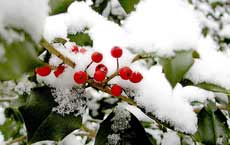
Good luck with it all and remember to ask Santa for a water butt this year
Mark
Article kindly provided by Mark from Oak Garden Services
You can contact Mark directly if you would like more information on gardening or the services they offer
Tel: 05 55 98 62 03
Email: [email protected]
Share to: Facebook Twitter LinkedIn Email
More in courses, garden, heating, limousin, summer, technology
By FrenchEntrée
Leave a reply
Your email address will not be published. Required fields are marked *




REPLY